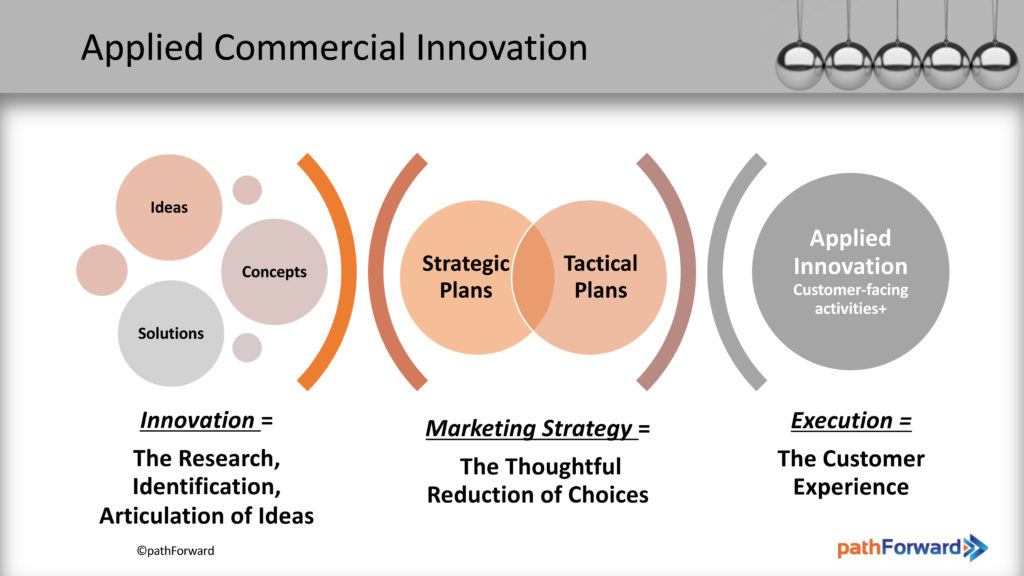For several years now, every life sciences company has been chasing innovation in their commercial activities. Most often this has been done by digital, interactive, or multichannel groups that have operated in bubbles outside of core marketing and sales functions—and heavily buoyed by agencies and large consulting firms. Two results have been prevalent: 1) Pilotitis, i.e., lots of pilots that go nowhere, and 2) Frequent inability to sustainably embed most of these innovations into the business.
We describe this as “remote archipelago” syndrome. Lots of small islands of activity, rarely interconnected to each other, with no bridges to the mainland, and so remote that they are often out of sight.
At least three reasons for this syndrome are:
- A belief that some magic button out there will offer unique benefits, impact, and competitive advantage—thus driving an expensive search for one.
- A tendency to get excited by shiny new objects, whether or not they support a strategic imperative, i.e., nifty solutions looking for relevant problems. This problem gets exacerbated by what we call “seduction by hindsight.” We all read and hear about brilliant innovations; it is easy to say they were brilliant in hindsight, but many were accidental or desperate necessities. We also fail to consider the many failures by the same teams and processes—or the exact same brilliant ideas that failed elsewhere because of poor execution.
- The lack of an organized or systematic way to consider those innovations in strategic and tactical plans and to get them embedded into those plans.
A Proposed Approach
In order to overcome this syndrome, we have articulated a practical and connected framework of “applied innovation.”
Let’s start with the first and most important principle: “Marketing is the thoughtful reduction of choices.”
This is not a new principle—it is what marketing has always been about. We live with constrained resources of time and money, and we are always competing against other products or with buying inertia for one reason or another. Thus, the discipline of marketing works hard to thoughtfully reduce the choices we have based on insights and other tools and techniques. This is shown in the middle of the chart (Figure 1) and is reflected in Strategic and Tactical Plans.
 Unlike other industries, life sciences has a very limited toolbox that keeps shrinking, mainly due to regulations—but also due to the industry’s own inertia and lack of creativity. Essentially, marketing has few choices to draw from in order to meet its goals of bringing information and services, directly or indirectly, for the benefit of patients.
Unlike other industries, life sciences has a very limited toolbox that keeps shrinking, mainly due to regulations—but also due to the industry’s own inertia and lack of creativity. Essentially, marketing has few choices to draw from in order to meet its goals of bringing information and services, directly or indirectly, for the benefit of patients.
Come Innovation
We define innovation as a robust, disciplined, and organized process to research, identify, and articulate ideas for consideration. But this consideration must be an integral part of the marketing process for developing strategies and not be some isolated pilot-driven remote archipelago of ideas, concepts, and designs. In order to have any impact, they need to be articulated and integrated into strategies to address needs or opportunities during the strategic process and not shoed-in after the fact. Of course, this does not preclude the need for special attention and caring and feeding of the innovation process, but ultimately it needs to be integrated.
Finally, Execution
As with any strategy or tactic, even if it is the most innovative one, when not executed skillfully it will be at minimum wasted, or even worse, it could cause brand damage.
As the saying goes, “Ideas are a dime a dozen but successfully executing them is priceless.” Many innovation initiatives fail to address execution excellence and focus only in the sexier front-end, or discovery phases. Not addressing the back-end of innovation, i.e., execution excellence, leads to many of those ideas never delivering any benefits or competitive advantage.







